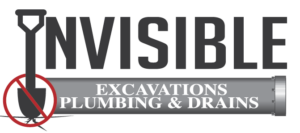Often described as pipe bursting, trenchless technique refers to replacing old sewer and drain pipe line with a new one. The new piping can either be the same size with the current pipeline or a larger one. It is done by inserting a cone-shaped bursting part into the old pipeline and forced through it. As it goes through, it fractures the present pipe; while the new pipeline is fixed into position simultaneously.
How trenchless repair works
The process is initiated by the client who asks for a Sewer pipeline replacement. After that, the service provider starts getting ready to undertake the task by first visiting the residence of the customer.
Identification of the sewer problem by camera
Once the expert arrives at the home, the first thing is to run a camera through the pipeline. After careful assessment and consideration, the expert will recommend the most suitable trenchless repair for the particular issue.
Assessing the sewer line
After appropriate evaluation, the expert will dig two small holes at one of the ends of the sewer or the section of the pipeline under repair. One end of the cable is attached to a jack while the other is connected to the breaking end.
Insertion of the new pipe
The breaking head is now attached to a new seamless, heat fused HDPE piping. The new tubing is drawn in as the current one is broken into pieces by the breaking head.
Types of bursting techniques
Many bursting techniques are employed. The main difference is how the force is generated and transferred to the piping during this operation. This difference is usually brought about by the breaking crown that is in use.
Pneumatic line bursting
The pneumatic technique is one of the most widely used trenchless technologies and has been in use for several years. In this method, the breaking crown is a soil displacement hammer, and it is cone shaped. It is forced in by compressed air and operates at a rate of about 180 to 580 blows per minute. The action of the crown is comparable to that of a hammer; as it creates a fracture with every stroke. Its work is combined with the pressure from the pulley cable. The cable is injected through the old pipeline and attached to the front part of the head, and it keeps it pressed against the old pipeline wall and pulls the new duct along.
The method is appropriate for replacing pressure and gravity pipes ranging from 4” to 54” diameter. No surface preparation is required. It is possible to install a larger pipe of about 1.5 times bigger than the old one.
Hydraulic line bursting
Here, the process is carried out in steps, which are recurrent until the entire span of the existing piping is replaced. Each sequence occurs in two phases. First, the breaking head is drawn into the current channel for the span of the section then the head is expanded sideways to break this pipeline. The splitting head is brought forward with a pulley cable which introduced through the existing pipe. The new pipeline and the hydraulic supply pipes are added from the rear. The breaking head usually has four or more interlocking sections which are hinged at the middle. This method makes it possible to replace ductile steel and iron, which is not possible through other methods. It is mostly used for online fixing of sewers as well as gravity pipe ranging from 6” to 20” diameter.
Static line bursting
In this type, the force comes from only dragging the breaking head forward. The force arises from a horizontal winch. The process is done in series, and not continuously.
The method applies to water or gas pipelines which are made using ductile steel or iron. It can be utilized for pipes ranging within 4” to 48” diameter.
Advantages
• Expensive landscape is preserved
• The process takes one day
• Life expectancy of 50+ years
• Less waste creation
• Little disruption to the sewer line
Trenchless repair considerations
Trenchless fixing requires proper planning as well as designing. Most pipes may be upgraded to about 25%. However, the dimension of the new pipeline depends on many factors such as the original piping width and the soil type and conditions. Therefore, always ensure you get a qualified provider to carry out trenchless Sewer pipe Repair.

